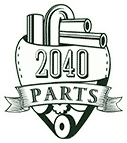Mas Industries T368 Outer Tie Rod End on 2040-parts.com
Saddle Brook, New Jersey, US
Tie Rod Linkages for Sale
 Mas industries t3021 outer tie rod end(US $24.90)
Mas industries t3021 outer tie rod end(US $24.90) Mas industries t415 outer tie rod end(US $24.54)
Mas industries t415 outer tie rod end(US $24.54) Mas industries is229 inner tie rod end(US $23.38)
Mas industries is229 inner tie rod end(US $23.38) Mas industries t487 outer tie rod end(US $23.19)
Mas industries t487 outer tie rod end(US $23.19) Mas industries t2992 inner tie rod end(US $22.31)
Mas industries t2992 inner tie rod end(US $22.31) Mas industries t3017 inner tie rod end(US $24.50)
Mas industries t3017 inner tie rod end(US $24.50)
Sacramento, Salt Lake City, Los Angeles top road frustration study
Thu, 06 Oct 2011Weather, crashes, traffic and attitude--these are the things that make our commutes unbearable. Now, the RoadIntel.com Web site has ranked cities based on its "road frustration index." The index is based on how weather affects the roads, the amount of traffic, the number of crashes and driver sentiment, which is calculated by searching for keywords such as "traffic jam" and "stuck" on Twitter. On the site, you can look at cities ranked day by day and even hour by hour.
Iconic Saab 900 convertible turns 25
Fri, 13 May 2011In happier Saab news, the iconic Saab 900 convertible is a quarter of a century old this year, having made its U.S. debut in 1986. The 900 convertible played a key role in expanding the drop-top segment from a tiny niche in the market 25 years ago to its current .
Concept Car of the Week: Honda Kiwami (2003)
Fri, 11 Apr 2014As part of Honda's exploration into new, clean-performing technologies, the Kiwami concept was created to test public acceptance of the idea of a large, fuel cell-powered luxury sedan. Unveiled in 2003, the simple yet striking design seemed like a Japanese twist on the Renault Vel Satis concept, which shared a similar wedge profile, wide stance and minimalist approach. However, the Kiwami found its own interpretation of modern luxury, expressed through elegantly integrated technology rather than with crystal champagne glasses. Up front, a full-width LED strip headlamp sat flush with the flat bonnet and the rectangular bumper to create a design of primitive beauty. Further examples of the same simple Japanese aesthetic are found around the car, including the uncluttered body panels and a full-width tail-lamp graphic that matched the front theme. The dramatic proportions of the interior were closely related to the package of the hydrogen power plant. Unlike other manufacturers at the time, Honda engineers did not create a 'skateboard' fuel cell chassis below the cabin. Instead, a sideways H-shaped layout for the control unit, ultracapacitor, fuel cell stack, hydrogen storage and other components was used, helping to create a lower center of gravity.


